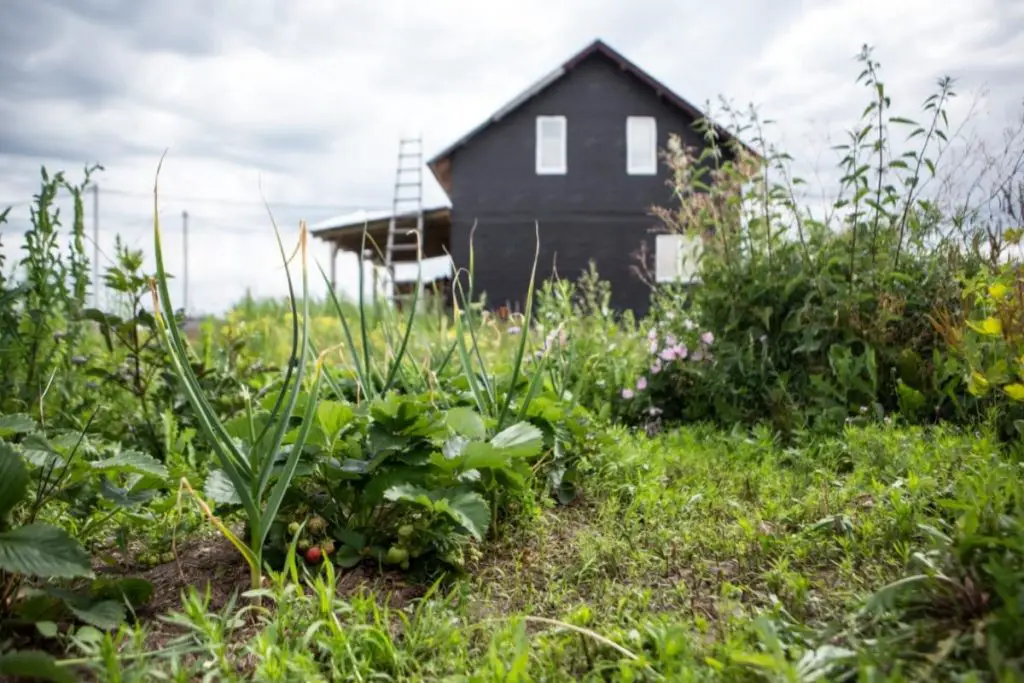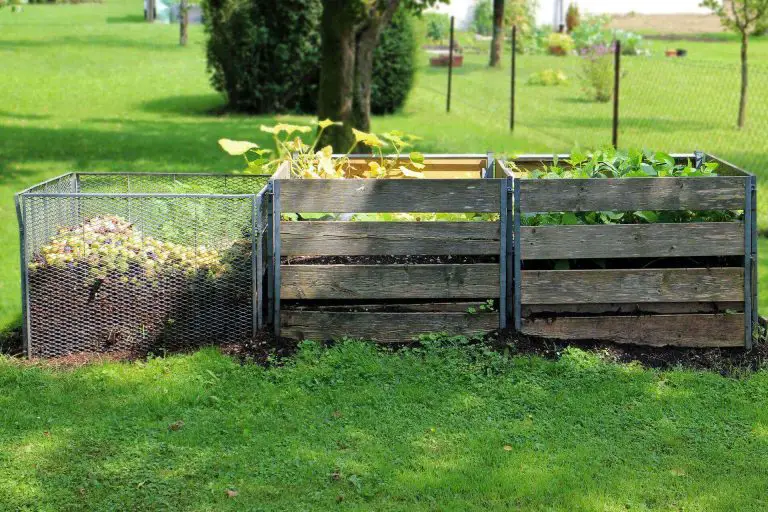Permaculture Gardening for Beginners – How to Get Started
This Permaculture Gardening for Beginners Guide can help you plan to start a permaculture garden in no time. It may be that you already have an established garden and are wondering how you can transition to a more sustainable option.
So how exactly do you start a permaculture garden?
Start by examining your garden and identifying exactly where you want your permaculture garden situated. You can jot down on paper any ideas or plans you have and maybe add some rough drawings of how you want them to look.
You could add in a water feature or other feature that appeals to you and decide where you will plant annuals and perennials.
Let’s consider exactly what a permaculture garden is and how you can transform your garden into something that is truly sustainable and underpinned by the permaculture concept.
DISCLAIMER
Some of the links on here are affiliate links and I may earn if you click on them, AT NO EXTRA cost to you. Hope you find the information here useful! Thanks.
Related Articles:
- Permaculture Flower Garden – Benefits of an Organic Garden
- 9 Best Permaculture Plants In 2022!
- How to Start Your Own Permaculture Vegetable Garden
- 7 Benefits Of Mushroom Compost: All The Important Info!

Permaculture Gardening for Beginners – What Is It?
A permaculture gardening for beginners garden uses the elements such as wind, sun and water to create an organic garden that utilises nature.
Conventional horticulture tries to fit nature into its own requirements and create things that are not always in line with nature.
It attempts to divide up soil and organise it in a visually appealing way, making it adhere to specific rules. As nice as this can be it’s not a natural way to create a garden
In contrast, a permaculture garden works with nature, not against it.
How you develop your garden will certainly depend upon your specific garden such as the ecosystems and climate already in existence.
Use a Broadfork to gently loosen, prepare and aerate your soil to increase microbial life and earthworms!

Permaculture places more focus on building up soil progressively and gradually so they’re well balanced and also full of nutrients.
Before you can begin creating your own special permaculture garden, you need to fully comprehend what a permaculture garden truly suggests to you.
Permaculture gardening for beginners offers a great deal of adaptability, and it’s inevitably up to you to determine exactly how you wish to create and also structure the area.
You’ll need to consider what your priorities are and think about numerous factors like efficiency, sustainability, aesthetics, and more.
You don’t require a huge backyard to begin with permaculture horticulture. A small backyard or even a porch can be all that’s needed to create a production green space.
Little things that we can do to contribute to a sustainable environment will be one step towards reducing our carbon footprint.
Whether you grow enough food to feed your household, or simply sufficient tomatoes or fresh natural herbs that you need throughout the warmer months it’ll be worth the effort.
Or you could simply want to have a little bit of greenery to help you stay in touch with nature and also possibly help out regional pollination.
It’s important to use mulch and compost in permaculture gardening as it minimises the need for water and helps eliminate waste.
Add a worm factory vermicompost bin to create rich humus soil to add to your plants from your organic kitchen waste and food scraps!

These are permaculture concepts that clever organic gardeners adhere to anyway, primarily since they are good for our yards and also our plants.
You should get used to using mulch as well as garden compost, so it’s a good idea to cultivate a number of areas where you can produce clippings.
How to Grow Vegetables and Herbs

Food crops that return time after time are a great investment and can save some much-needed cash.
Kitchen herbs and vegetables such as rhubarb and asparagus need limited upkeep will only require a small amount of weeding and pruning and probably only need fertilizer once or twice a year.
Fruits such as rhubarb do well in low areas that retain moisture.
Perennial plants keep giving year after year and make sense in any garden. You can utilise herbs for lots of different things such as cooking and medicinal purposes.
If you’re a lover of small fruits they can be easily grown in a permaculture garden. They look particularly effective when used to surround boundaries. You should provide support such as a trellis to train them so they don’t droop.
Permaculture Gardening for Beginners – How to Rebuild Soil
One of the key learning features of permaculture gardening for beginners is maintaining good, healthy and rich humic soil. If your soil isn’t in good condition and has very little organic content and humus, if it is compacted, or damaged in any way, it has to be repaired, but don’t panic this is possible.
You can make use of plants with deep roots such as dandelions to help break up the soil. If it can’t be avoided dig around the soil once before adding in compost. In addition, you can use green manures to generate biomass.
If you live in a cold climate you can grow peas and beans successfully and they add nitrogen to the soil which also assists in rebuilding the soil.
Plant Stacking
By going with the way nature forms trees and plants you’ll be fully engaged in the permaculture “way”. Plants naturally grow in a “stacked” way. So, trees create a canopy, shrubs grow below trees and typically herbaceous plants underneath shrubs.
Lastly, you have ground cover plants that have root crops that exist below ground. Replicating this layout will utilise available space and provide maximum growth to your garden area.
Start your own agroforestry fruit forest by grafting fruit trees with this grafting paste/wax!

In nature, plants are regenerated and dead plants are replaced by new ones. Stacking plants is good practice and will ensure you get maximum growth during each growing season.
It also eliminates having bare areas in the garden or waiting a long time to get fruit or veg.
Micro Climate
When groups of plants are placed together there is a variety of shade, humidity and temperature which is a good environment in which to support growth.
Plants growing together can help protect their companions from the elements such as sun, wind and rain. Your garden will develop resilience and plants will help each other to survive
Vertical Planting
Plants do not only grow level on the ground, but some also have vertical structures and better use can be made of space.
Creeping plants such as kiwis and grapes can be expanded over trellises, arcs, fencings, and pergolas. Larger plants such as watermelons, pumpkins, etc can be placed and grown upwards on a wire mesh or such.
Placing plant trellises in and around your permaculture garden can be a quick and easy set-up!

Benefits of Permaculture Gardening for Beginners
The great thing about permaculture gardening is that nothing goes to waste. Everything is utilised to further the growth of the garden.
Water is crucial for effective growth and in a permaculture garden water is recycled as much as possible. Rain Barrels can be added to catch rainwater that can then be used to water plants.
The benefits of this are twofold; it saves water and rainwater is particularly good for plants as it is full of nutrients.
Pesticides are avoided in a permaculture garden. The use of water features will encourage wildlife in the garden that often feeds on pests that are notorious for destroying garden plants.
Companion planting is also a good way to prevent certain pests and insects from destroying your seeds.
It’s been shown that chemicals in our food can have a detrimental effect on health. Producing pesticide-free organic food can be beneficial to health prevent certain diseases caused by certain pesticides.
Sharing what we grow also encourages a community spirit and helps us connect with others creating a mutual love of creating a greener world.
In addition, spending time outdoors is great exercise and fantastic for the soul. Avoiding pesticides also promotes biodiversity and valuable pursuit to help protect our wonderful planet.
Another great reason to adopt permaculture gardening is that it cuts down on maintenance. Once properly established a permaculture garden will take care of itself.
There are lots of ways that a permaculture garden can be created and it’s a positive step to make the world a greener place.
Related Posts:


![How To Harvest Rosemary [The RIGHT Way!]](https://aboveandbeyondgardening.com/wp-content/uploads/2021/10/How-To-Harvest-Rosemary-768x512.jpg)
![When To Harvest Jalapeños? [+Mistakes To Avoid]](https://aboveandbeyondgardening.com/wp-content/uploads/2021/10/When-To-Harvest-Jalapenos-768x512.jpg)

![How To Grow Campari Tomatoes From Scratch [A Complete Guide]](https://aboveandbeyondgardening.com/wp-content/uploads/2022/08/How-To-Grow-Campari-Tomatoes-7-768x512.jpg)
![8 Pumpkin Growing Stages [+ Growth Tips!]](https://aboveandbeyondgardening.com/wp-content/uploads/2022/10/Pumpkin-Growing-Stages-9-768x512.jpg)
